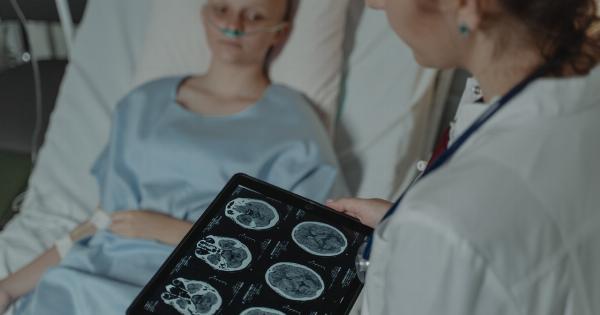In recent years, scientists and researchers have made a monumental breakthrough in the field of genetics.
This breakthrough has the potential to revolutionize medicine and open up new avenues for treating and preventing a wide range of genetic disorders. Through groundbreaking advancements in gene editing technologies, scientists have now achieved the ability to correct the majority of genetic errors, bringing hope to millions around the world.
Understanding Genetic Errors
To fully appreciate the significance of this scientific breakthrough, it is important to understand what genetic errors are and how they impact our health.
Genetic errors, also known as mutations, are alterations in the DNA sequence that can lead to various disorders or diseases. These errors can occur due to a variety of factors, including inherited mutations or environmental influences, and they can affect any part of the body.
Genetic errors can result in a wide range of conditions, from relatively mild disorders to severe illnesses.
Some genetic errors impact the physical characteristics of an individual, such as eye color or height, while others are responsible for inherited disorders like cystic fibrosis or sickle cell disease.
Traditional Approaches to Genetic Disorders
Before the recent breakthrough, treating genetic disorders involved either managing the symptoms or attempting to correct the consequences of the genetic error.
For example, medications could be prescribed to alleviate the symptoms of a specific disorder, or surgeries could be performed to address physical abnormalities caused by the genetic mutation.
While these traditional approaches provided some relief, they did not address the root cause of the problem – the genetic error itself.
This meant that individuals with certain genetic disorders had to live with the condition throughout their lives, often requiring ongoing medical care and support.
The Emergence of Gene Editing Technologies
In recent years, gene editing technologies, such as CRISPR-Cas9, have emerged as powerful tools in the field of genetics.
These technologies enable scientists to precisely modify genes in living organisms, paving the way for potential cures for genetic disorders.
The CRISPR-Cas9 system uses a guide RNA molecule to target a specific gene and an enzyme called Cas9 to cut the DNA at that location.
Once the DNA is cut, the cell’s natural repair machinery can be utilized to introduce the desired genetic changes. This breakthrough technology has shown tremendous promise in correcting genetic errors.
Correcting the Majority of Genetic Errors
Thanks to the advancements in gene editing technologies, scientists have now achieved a remarkable milestone – the ability to correct the majority of genetic errors.
Through targeted gene editing, researchers can now rectify specific mutations that cause genetic disorders, potentially leading to a cure for these conditions.
By modifying the DNA sequence responsible for the genetic error, scientists can eliminate or replace the defective gene.
This correction at the DNA level holds the promise of permanently restoring normal gene function and alleviating the symptoms associated with the disorder.
Applications and Implications
The ability to correct the majority of genetic errors has far-reaching applications and implications in the field of medicine. Here are a few key areas where this breakthrough could have a significant impact:.
Treating Genetic Disorders
With the ability to correct genetic errors, researchers can now envision a future where many genetic disorders can be effectively treated or even cured.
Conditions like Huntington’s disease, Duchenne muscular dystrophy, and certain forms of cancer that are caused by specific genetic mutations could potentially be addressed through gene editing techniques.
Preventing Genetic Disorders
Gene editing technologies also hold the potential to prevent certain genetic disorders from being passed on to future generations.
By correcting the genetic error in reproductive cells, scientists could ensure that the corrected genes are inherited instead of the mutated ones, reducing the likelihood of the disorder occurring in offspring.
Enhancing Personalized Medicine
The ability to correct genetic errors opens up new possibilities for personalized medicine, where treatments are tailored to an individual’s specific genetic makeup.
By understanding an individual’s genetic profile, doctors can identify and correct any potential errors that may give rise to diseases or conditions, ultimately leading to more effective and targeted treatments.
Advancing Biomedical Research
The ability to correct genetic errors will undoubtedly advance biomedical research in a multitude of ways.
Scientists can use gene editing technologies to create more accurate disease models in the lab, allowing them to study the effects of specific genetic corrections on the development and progression of various disorders. This, in turn, will further our understanding of genetic diseases and help identify potential therapeutic targets.
Ethical Considerations and Future Challenges
As with any breakthrough technology, the ability to correct the majority of genetic errors raises ethical considerations and challenges.
While gene editing holds immense potential to improve human health, it also raises concerns about the ethical implications of altering the human genome.
One key challenge lies in ensuring that gene editing is used responsibly and ethically.
Regulations and guidelines must be established to govern the use of these technologies, ensuring that they are only employed for legitimate purposes and taking into account factors such as safety, efficacy, and consent.
Another challenge is the need for ongoing research to refine gene editing techniques and ensure their long-term safety and effectiveness.
While significant progress has been made, there is still much to learn about the potential unintended consequences of gene editing and the long-term impact of genetic corrections on individuals and future generations.
Despite these challenges, the scientific breakthrough of correcting the majority of genetic errors paves the way for a future where many genetic disorders can be effectively treated, and potentially prevented altogether.
With continued research and responsible implementation, gene editing technologies have the potential to revolutionize medicine and improve the lives of millions around the world.






























